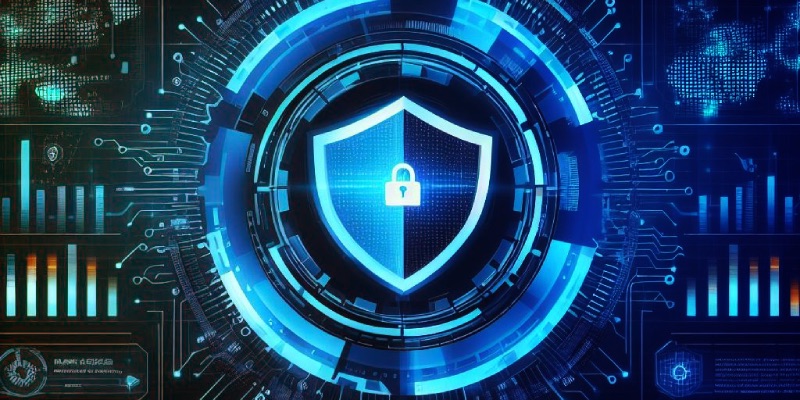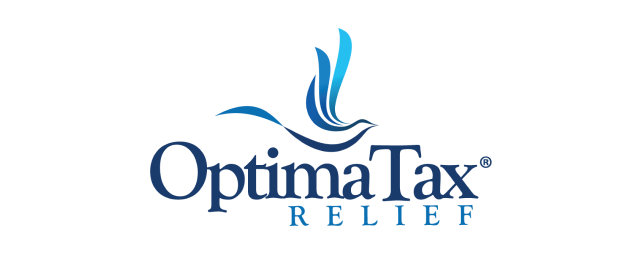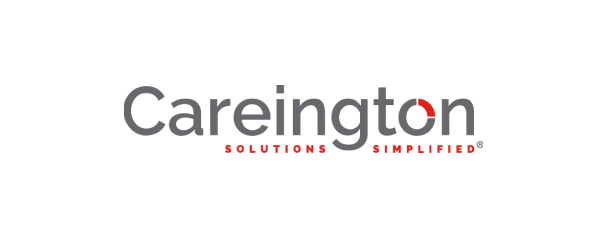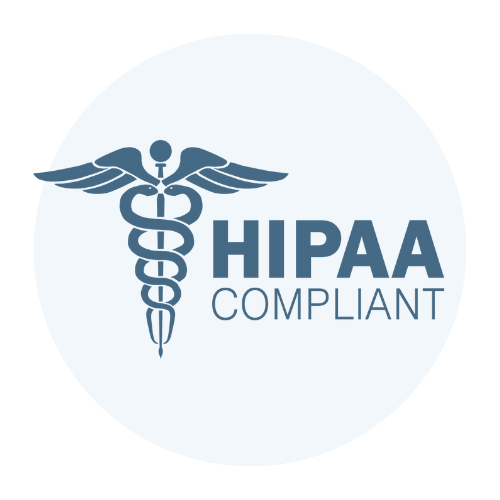Year-round Monitoring and Tracking: Key to Effective Cybersecurity

Cybercrime happens round-the-clock. So should cybersecurity. Year-round monitoring and tracking enables organizations to proactively prevent threat actors from dealing financial, operational, or reputational damage. As a crucial element of cybersecurity, year-round monitoring and tracking involves the continuous collection and analysis of network activity data; the detection and reporting of system anomalies and unusual activities that may indicate a threat; and the appropriate response when a threat has been identified. A high-demand sector and a critical discipline in IT, cybersecurity focuses on the protection of computer systems from unauthorized access and other threats. Without it, organizations and individuals would be overly exposed to a broad range of cybercrime such as ransomware, credit card fraud, and privacy breaches. But without year-round monitoring and tracking, cybersecurity would wage a high-stakes war with a serious handicap. Talk to our experts today! Exemplified by the feverish exploitation of zero-day vulnerabilities, cybercriminals waste no time in undermining your defenses. A momentary lapse can be all they need to orchestrate a data breach. To avoid being caught off guard, many smart organizations have implemented year-round monitoring and tracking to reinforce other cybersecurity tools and practices. Cybersecurity Metrics and KPIs Cybersecurity metrics and KPIs (Key Performance Indicators) are quantitative measures that help organizations assess the effectiveness of their security measures. Tracking these measures help companies to: Identify and prioritize their most critical cyber risks and vulnerabilities Drive risk mitigation activities Evaluate the ROI (return on investment) of specific cybersecurity efforts, procurements, and service subscriptions Validate compliance with relevant standards and regulations Improve security awareness and stakeholder accountability Enhance decision making, communication, and collaboration regarding cybersecurity issues There are many cybersecurity metrics and KPIs but here are some of the most important: Number of identified vulnerabilities Number of detected viruses and malware Number and severity of security incidents and breaches Mean time to detect (MTTD) suspicious activities and threat indicators Mean time to respond (MTTR) to security incidents Percentage of systems and applications patched and updated Mean time to deploy a patch or security update Percentage of staff who have completed cybersecurity training and awareness programs Number of authorized and unidentified devices on the network Compliance Monitoring Compliance monitoring refers to the process that checks and verifies whether systems, devices, processes, and networks are adhering to applicable laws, regulations, and standards. This process is crucial for cybersecurity because it helps organizations protect their business and reputation while also reducing the likelihood of regulatory violations that are subject to stiff penalties and fines. Talk to our experts today! Some of the best practices for compliance monitoring include: Identify the relevant standards and regulations for your industry and region. Conduct a gap analysis of your current security controls and processes. Implement risk-based controls that meet your compliance requirements. Establish and review the appropriate metrics to evaluate your compliance performance. Regularly conduct vulnerability assessments and penetration testing to verify the effectiveness of your security measures. Use continuous monitoring and tracking tools to detect and respond to any suspicious changes and incidents that may compromise security or compliance. Conduct staff training on cybersecurity, risk awareness, and the importance of regulatory compliance. Use technologies such as compliance mapping software to improve efficiency and accuracy. Cybersecurity Planning Any organization that depends on digital systems needs to develop and implement a cybersecurity plan to protect their systems and customers from various kinds of cyber threats. A good plan includes the following key steps: Define the scope and key objectives of the cybersecurity plan. Conduct risk assessments to identify cyber risks to which your organization, digital assets, and stakeholders are exposed to. Establish roles and responsibilities for plan implementation. Form a cybersecurity team and designate the company’s IT security leader (such as a chief information officer or CISO). Identify and deploy key security measures such as firewalls, antimalware solutions, backup systems, and encryption. Develop a comprehensive set of policies and procedures to provide consistent and effective guidance on cybersecurity. Monitor, evaluate, and improve your security measures regularly. Once your cybersecurity plan has been finalized, consider the following factors to enhance its implementation: Effective communication about the plan’s purpose, value, and expected benefits. Well-informed allocation of resources. Regular staff training. Regular review and continuous improvement of the cybersecurity plan. Adoption of industry best practices and standards. Year-round Monitoring and Tracking Organizations need 24/7/365 security monitoring and tracking because cybercrime does not take breaks, may occur at any time, and can deal serious damage. A continuous 360° visibility into your threat environment can help you to: detect and report suspicious system changes and network activities in real time prevent or mitigate the impact of cyberattacks identify and address system flaws, weaknesses, and vulnerabilities update systems and implement patches in a timely manner adhere to established laws, regulations, and standards reduce the likelihood of data breaches and the success rate of cyberattacks protect your business reputation and build trust with customers You can use several tools to implement year-round monitoring and tracking. Effective solutions include: Intrusion detection and prevention systems (IDPS) Security information and event management (SIEM) systems Vulnerability scanning and penetration testing Penetration testing Managed security services such as those offered by TrustNet typically include year-round monitoring and system protection. TrustNet’s service combines automated compliance monitoring for more than 70 regulatory frameworks with continuous cyber risk monitoring capabilities that help prevent breaches, downtime, and remediation costs. Meanwhile, the iTrust Cyber Risk Ratings service is a next-gen platform that goes beyond monitoring just your network and systems to include third-party environments (such as customer/vendor review sites and underground hacker sites) to determine your crowdsource reputation and to detect indicators of compromise. Conclusion As cyberattacks grow more sophisticated and severe, year-round monitoring and tracking has become a business essential. But while it delivers compelling benefits, a continuous cybersecurity monitoring apparatus built and run in-house will involve costs that will likely break the bank of many organizations, especially SMBs. Managed security and next-gen solutions such as those provided by TrustNet and iTrust represent the sweet spot between having full 360° awareness
Breach Monitoring and Remediation Response: What Hackers Know About You

Breach monitoring and remediation are key processes in the protection of vital digital assets. Without them, the cumulative damage caused by data breaches would be far worse than the already staggering figures various statistics report regularly. Hundreds of data breaches occur every year, exposing trade secrets, sensitive source codes, and several hundred million user accounts to identity theft, IP infringement, ransomware, and other cybercrime. A 2023 IBM report estimates each data breach to cost around US$4.45 million. With so much at stake and with threat actors constantly refining their techniques, the need for smarter monitoring and remediation strategies has become existential. Breach monitoring and remediation counts among the key cybersecurity solutions that directly address the alarming threat of data breach. Understanding Cyber Risk and Breaches Cyber risk refers to the potential consequences a cyberattack can pose to an organization. Cyberattacks can compromise the integrity, availability, and confidentiality of data, causing significant financial, operational, and reputational damage. Data breaches, a specific type of cyberattack, occur when unauthorized entities gain access to confidential data, often resulting in the exposure of sensitive customer or business information. As the digital landscape continues to evolve, so does the risk associated with cyber threats like data breaches. This dynamic highlights the importance of robust cybersecurity measures in safeguarding organizations and their customers. However, traditional approaches to cybersecurity are often reactive, mostly addressing cyberattacks only after they have occurred. Such approaches often lack the capability to prevent advanced threats, leaving organizations vulnerable to sophisticated intrusions. To stay ahead of advanced threats, organizations need a more proactive and adaptive approach to cybersecurity, one that anticipates and neutralizes threats before they can cause harm. This shift represents a fundamental change in how organizations view and address cybersecurity, placing greater emphasis on continuous monitoring, threat intelligence, and preemptive defense strategies. The Breach Monitoring and Remediation Process Breach monitoring and remediation is a process that involves continuous monitoring, analysis, and improvement of an organization’s cybersecurity posture. Using this process, an organization does not only implement security measures to prevent cyberattacks. It also regularly checks the effectiveness of those measures, identifies any gaps or weaknesses, and takes corrective actions to fix them. This approach helps organizations stay proactive in identifying and addressing emerging cyber threats and vulnerabilities, rather than taking a reactive or passive stance. By constantly assessing and improving their security posture, organizations can reduce the risk of data breaches, minimize the impact of incidents, and enhance their resilience and reputation. Key Components of Breach Monitoring and Remediation Breach monitoring and remediation typically consists of six key stages: detection, analysis, containment, eradication, recovery, and prevention. Detection. This step involves the detection and verification of signs that indicate a potential breach. These signs include unusual network activity, unauthorized access attempts, suspicious files, and unexplained changes in system configuration. Analysis. This step determines the scope, impact, and root cause of the breach, as well as the threat actors and their motives. Analysis can be done using techniques such as forensic and malware analysis. Containment. This step isolates the affected system and stops the breach from spreading further or causing more damage. Containment can be done using various tools and techniques such as network segmentation and blocking external access. Eradication. This step involves the removal of any malicious code or software that was covertly installed as part of a breach. Recovery. This step involves restoring systems to normal operation and assessing any further damage that needs to be mitigated. Recovery can be facilitated using system backups, incident response plans, and business continuity protocols. Prevention. Organizations take measures such as policy change and the implementation of new or better security controls to ensure that similar incidents don’t happen in the future. Note: A breach monitoring and remediation service can come bundled into a robust platform that provides other capabilities well beyond the foregoing components. TrustNet’s iTrust Third-Party Risk Ratings Platform, for example, integrates many practical innovations such as continuous 360° risk assessments, automated compliance tracking, real-time network vulnerability alerts, crowdsource reputation ratings, and hacker threat analysis. Breach Remediation Responses By having a breach remediation plan in place and following it diligently, an organization can reduce the cost and mitigate the impact of a data breach; and resume normal operations faster. A breach remediation plan outlines the set of actions that promptly, effectively, and efficiently address a data breach. The key steps in breach remediation include: Working with forensics experts to identify the source, scope, and severity of the breach, as well as the data and systems affected. Analyzing backup or preserved data to determine what data was compromised and whether it can be recovered or restored. Reviewing logs and other evidence to understand how the breach occurred and whether there are any indicators of compromise or malicious activity. Implementing the recommended remedial measures as soon as possible, such as patching vulnerabilities, changing passwords, notifying affected parties, and reporting the breach to relevant authorities. Benefits of Breach Monitoring and Remediation Breach monitoring and remediation is increasingly being adopted by more organizations due to the worsening threat environment and because of the significant advantages it provides. Talk to our experts today! The major benefits of a breach monitoring and remediation system include: Real-time risk awareness. Companies gain a clearer real-time understanding of their current risk exposure, allowing for informed decision-making and resource planning. Improved incident response. Continuous monitoring and analysis enable companies to detect and respond to threats faster and more effectively, minimizing the potential damage of data breaches. Enhanced compliance posture. Ongoing risk assessment and remedial actions enable companies to maintain compliance with applicable laws, regulations, and industry standards. Challenges and Considerations Despite its significant advantages, breach monitoring and remediation faces several challenges. These include the cumulative cost of allocating tools, technologies, dedicated staff, and other resources to set up and run a dependable breach monitoring and remediation system. For smaller and mid-sized organizations, partnering with a trusted third-party provider can address this roadblock. Sustained alignment with complex regulations is another challenge. For example, relevant
Cybersecurity Compliance for Startups

Compliance rarely figures in the startup agenda. Instead, newly launched businesses often focus on product development, market traction, and rapid growth. Infused with energy and seed capital, startups obsess about innovation and high performance as they pursue “urgent” business objectives. This is unfortunate because the high failure rate startups face can be partly attributed to non-compliance. In fact, a CB Insights report cited regulatory and legal challenges as the fifth top reason startups fail. Nimble by nature, startups can be prone to cut corners and are more likely to violate legal and compliance standards compared to larger companies. This is partly due to inexperience in navigating the regulatory landscape and the lack of resources and incentive to achieve compliance. Ironically, prioritizing compliance at the onset can pave the road towards sustained and scalable business growth over the long haul. That’s because compliance helps establish best practices, build trust with all stakeholders, and attract the right customers. Compliance helps companies set up a secure environment for conducting business and a nurturing workplace that drives worker satisfaction, productivity, and loyalty. It is not by accident that the most successful companies in the world are buoyed by a strong compliance posture. This article aims to help your startup go beyond regulatory standards to using compliance to facilitate desired business outcomes. What is Compliance? Compliance refers to the organizational practice of adhering to a relevant standard, policy, regulation, or framework. It covers many areas including consumer privacy, data protection, financial regulations, accounting standards, employment laws, and mandated technical specifications. Organizations have learned over the years to treat compliance as a unified field and an ongoing process. While the baseline incentive to achieve compliance is to remove business obstructions and avoid regulatory penalties, compliance can also drive significant competitive advantage. Why Compliance Matters for Startups Compliance matters because it helps establish ethical behavior, mitigate business risk, demonstrate credibility, and foster trust. A company known to follow the rules can more easily attract customers and partners. For startups, compliance delivers benefits on multiple fronts: A level playing field with defined standards that apply to all competitors. The adoption of best practices across your organization. Avoidance of regulatory penalties and fines that can deal significant financial and reputational damage. A secure environment designed to meet customer expectations and protect their rights. Reduced likelihood of disruptive and damaging events such as data breaches. Assurance for investors and other stakeholders that your business upholds the principles of good governance. Improved ability to win bigger bids and expand your market. A stance of readiness for scalable growth over the long term. Do not hesitate to contact us today and find out more about our special offers Which Compliance Requirements Apply to Startups? Every company regardless of size and line of business operates under some form of regulation. For example, organizations need to follow local commercial practices and national business laws. They need to register their business, acquire relevant permits/licenses, and follow their own internal policies. Complying with relevant legislation and self-imposed guidelines helps shield your business from liabilities and drive accountability in the workplace. The specific compliance requirements for startups depend on several factors such as their location, customer demographic, and line of business. Regulatory standards typically cover the following areas: Business registration, licenses, and taxes. Companies need to register their business and obtain licenses/permits required by local, state, or federal legislation. Data protection and privacy. Standards such as the General Data Protection Regulation (GDPR) pertain to information security and data privacy. Accounting standards. Complying with widely recognized accounting frameworks such as the Generally Accepted Accounting Principles (GAAP) will make it easier for your startup to secure loans, attract additional investments, or go public when you eventually tip the scale. Financial regulations. Startups that process financial transactions or offer financial services can be subject to regulations such as anti-money laundering (AML) laws. All businesses that process payment card data are subject to the Payment Card Industry Data Security Standard (PCI DSS). Intellectual property (IP) rights. Startups should protect their creative output through patents, trademarks, and copyright. They should also conduct research to avoid infringing on the IP rights of other entities. Employment laws. Startups that employ workers need to follow relevant labor laws and workplace safety standards. Federal contracts. Only companies who can demonstrate their compliance with relevant frameworks can bid for public sector contracts. These frameworks include the Federal Risk and Authorization Management Program (FedRAMP) and the Cybersecurity Maturity Model Certification (CMMC). You can identify all the regulations that apply to your startup via a compliance risk assessment. It is best to conduct this process with regulatory experts or managed compliance providers to ensure that you don’t miss crucial details that can lead to costly violations. Formulating a Compliance Strategy Compliance is not a one-time checklist. It is a continuing journey that requires a well-designed roadmap for managing costs and maximizing benefits. Here are some practical steps to consider: Get buy-in from leadership. Having top management involved at the outset helps ensure that compliance becomes a priority for the entire organization. Appoint a compliance officer. Designate a professional to manage and monitor all the startup’s compliance activities. Conduct a compliance audit to identify the specific compliance requirements applicable to your business. Develop a formal compliance plan. Have your team develop an official set of documents that establishes the policies and procedures aimed at meeting the company’s regulatory requirements. How to Stay Compliant Meeting regulatory standards is one thing. Maintaining compliance is another. Here are some additional tips that can help your startup sustain compliance over time. Document everything. Centralize the management of all your controls, policies, procedures, and compliance activities. Stay updated. Regulations and compliance standards evolve over time. Keep your systems aligned with changes in regulatory requirements. Educate your people. Train your employees in how best to maintain regulatory standards. Get help from experts. Compliance specialists can provide practical guidance. Key Takeaways Often overlooked by startups, compliance can spell the difference between failure and success. So instead
Optima Tax Relief Partners with TrustNet to Enhance IT Security and Safeguard Sensitive Data

CyberSecurity Risk Management Tax resolution firm Optima Tax Relief partnered with TrustNet to upgrade its IT security infrastructure. The process kicked off with a technology audit, risk assessment, and vulnerability scan to provide all the data required for a comprehensive and accurate roadmap. Based on the roadmap, a proprietary cybersecurity platform was deployed to provide 24/7 protection and a 360°-visibility over compliance and security risks. Being near-perfect in one field doesn’t mean you’re an expert at everything. Rostered by taxation lawyers, certified public accountants, and other astute professionals, Optima Tax Relief excels at its core business but recognises its limitations, with in-house IT security among the most critical capabilities the company lacks. To fill the gap, Optima Tax Relief decided to look for a technology partner with a track record that matches its own. Anything less is too risky – especially for firms with the same industry, location, and client demographic as Optima Tax Relief. Given the already exacting regulatory climate it needs to navigate, Optima Tax Relief also faces another potentially crippling hazard: cybercrime. With Optima Tax Relief holding a trove of extremely sensitive data such as their clients’ tax identification numbers and social security numbers, any breach on their system can be disastrous for both the tax resolution firm and its customers. Adept at balancing ledgers, Optima Tax Relief appears to get all the numbers right. The company has got multiple Stevie Awards for Excellence for three consecutive years, including 2022, the California-based tax resolution firm also received Top Workplace honors the same year, a feat it has replicated unbroken for eight years running. Admired by staff and adored by customers, Optima Tax employs hundreds of professionals and has resolved more than a billion dollars in tax discrepancies for their clients, passionately helping people improve their financial situations since 2011. When Optima Tax Relief decided to talk with TrustNet, our team responded with the top item in our engagement protocol, we listened. That’s because different customers – even those in the same line of business – have unique compliance and cybersecurity needs, making the exact requirements of their businesses difficult to pin down unless a thorough and transparent conversation takes place. We understand where Optima Tax is coming from because we already serve some of the leading players in the financial services industry. Even then, Optima’s case certainly differed in several ways and in many areas, the solution for which will require much fine-tuning to be optimally cost-effective for the firm. To start things right, TrustNet conducted a preliminary information security audit to determine Optima Tax’s overall security posture. We then probed its processes, networks, and endpoints for weaknesses and vulnerabilities to help our technical planners map out an air-tight security layer for the tax resolution firm. Because the stakes are unusually high for businesses in the financial services industry, the solution we envisioned for Optima Tax adopts a Zero Trust posture. On green signal, we implemented the security infrastructure, consisting of onsite hardware appliances as well as cloud-based software systems that empower security administrators to remotely detect anomalies in network traffic, deploy AI-driven agents as force multiplier, and pre-emptively respond to any threat. On its website, Optima Tax Relief promises to provide a safe and secure site that its customers can trust with their sensitive data. That promise is made stronger by a trust-based partnership and a proprietary cybersecurity platform that significantly improves Optima Tax’s overall security posture, enables a 360* visibility over emerging compliance and security risks, and provides a reassuring 24/7 monitoring and protection for the resources, networks, and systems that allow Optima Tax to focus on improving the lives of its clients. TrustNet helps businesses build trusted relationships with their customers, partners, and employees by providing cybersecurity and compliance services. We are a leading provider of managed security, consulting, and compliance services. Since 2003, TrustNet has been a strategic partner helping clients ensure the security and integrity of their businesses. From our headquarters in Atlanta, Georgia, TrustNet serves mid-size and large organizations, both public and private, across multiple industries, in the United States, and around the world. TrustNet is a 2022 Global Infosec Awards Winner and the Editors Choice for Managed Security Service Provider.
Microsoft Sounds Alarm on Ransomware Threats to Apple’s MacOS

Apple’s macOS, known for its security features and stability, has long been considered a haven for users who want to keep their devices and data secure. However, recent findings by Microsoft security researchers suggest that this perception may no longer be accurate. Cybercriminals are taking advantage of legitimate macOS functionalities to spread ransomware, which has become a significant threat to the system’s security. A Look at the Flagged Ransomware Threats KeRanger This ransomware, first discovered in 2016, infects Mac systems through malicious software downloads. Once infected, KeRanger encrypts users’ files and demands payment for the decryption key. FileCoder This ransomware, discovered in 2018, is also spread through software downloads. Once it infects a system, it encrypts users’ files and demands payment for their release. MacRansom This ransomware is delivered through phishing emails and exploits vulnerabilities in Mac systems. Once installed, it encrypts users’ files and demands payment for the decryption key. EvilQuest This ransomware, discovered in 2020, is spread through malicious software downloads. Once infected, it encrypts users’ files and steals sensitive information, such as usernames and passwords. How Ransomware is Exploiting Legitimate MacOS Functionalities: Abusing System Services Cybercriminals use MacOS’s built-in system services, such as AppleScript, Automator, and LaunchAgents, to spread ransomware. These services are designed to help users automate tasks and run applications in the background, but attackers can also abuse them to spread malware. Exploiting Vulnerabilities Ransomware is also exploiting vulnerabilities in the MacOS to spread. For example, attackers have used vulnerabilities in the Gatekeeper security feature, which is supposed to prevent the execution of malicious software, to spread ransomware. Coercion and Social Engineering Ransomware is also spreading through coercion and social engineering tactics. Attackers are using emails and messages to trick users into downloading malware or ransomware to encrypt users’ files and demand payment in return for the decryption key. How to Protect Yourself from Ransomware on MacOS Keep Your System Up to Date Keeping your macOS up to date with the latest software and security updates is crucial in preventing ransomware attacks. Regular updates often address vulnerabilities that attackers can exploit to spread malware, so staying current can greatly reduce the risk of infection. Avoid Downloading Suspicious Software Avoiding downloading suspicious software is important in protecting your macOS from ransomware. Malicious software downloads are the most common way ransomware infects MacOS, so it’s important to be cautious when downloading anything from third-party sources. Always check the source and reputation of software before downloading and avoid clicking on links or downloading attachments from emails or messages from unknown senders. Use Anti-Virus Software Anti-virus software is an effective way to protect your macOS from ransomware attacks. These programs are designed to detect and prevent malware from spreading, including ransomware. They scan your system regularly for potential threats and can also alert you if you’re about to download potentially malicious software. Keeping your anti-virus software up to date is essential, as attackers constantly evolve their tactics, and new threats are being discovered. Backup Your Data Backing up your data is a crucial step in protecting against ransomware attacks. Ransomware often encrypts the user’s files, making them inaccessible, so having a recent backup of your data can ensure that you can restore your files if your system becomes infected. Regular backups can also help minimize the impact of a ransomware attack, reducing the likelihood of paying a ransom to get your data back. It’s important to store backups in a secure location, such as an external hard drive or cloud-based storage service. In conclusion, Apple’s macOS has long been considered a safe haven for users who want to keep their devices and data secure. However, the recent findings by Microsoft security researchers show that ransomware is becoming a major threat to the system’s security. Cybercriminals are exploiting legitimate macOS functionalities to spread ransomware, causing financial and data loss to users. To make sure your data is protected and your company is safe you might want to use some help from our cybersecurity professionals. Do not hesitate to contact us today and find out more about our special offers.
Hack the Pentagon 3.0: Shifting Focus to Facility Control Systems

The Department of Defense’s bug bounty program, known as Hack the Pentagon, is launching its third iteration. This time, it will focus on the facility control system network. The third iteration of the program, which is known as Hack the Pentagon 3.0, will look into the facility control system’s network. The program was first launched in 2016 by HackerOne, where the Department of Defense asked ethical hackers to identify and report security issues in the public web pages of the Pentagon. The Department of Defense launched a year-long bug bounty program called Hack the Pentagon in 2018. It sought to identify and report vulnerabilities in various high-value assets and hardware. On Friday, a draft solicitation for the third iteration of the program revealed that the Department of Defense would rely on ethical hackers to find and report vulnerabilities in the facility control system. The control systems of the FRCS are used by the Department of Defense to monitor and control various facilities’ equipment and systems. These include fire and safety systems, HVAC equipment, and security systems. According to the draft, the objective of the program is to collect information from a pool of innovative researchers to find and report vulnerabilities in a facility control system. It also aims to assess the system’s cybersecurity posture. The Department of Defense is looking to partner with a company that has experience in commercial crowdsourcing to select a group of trusted and skilled researchers to participate in the project. Previous bug bounties programs, such as those launched by the U.S. Air Force, the U.S. Army, and the Marine Corps, were also partnered with other organizations, such as Bugcrowd and HackerOne, to vet the researchers. The draft stated that the Department of Defense would establish the requirements for the researchers to participate in the program. They should be able to perform various tasks, such as source code analysis and reverse engineering. The bounty phase of the program, which the draft states will last for up to 72 hours, will be conducted in person. The success of previous bug bounty programs can be attributed to the well-managed nature of their operations. The Department of Defense’s experience also shows that DoD can significantly benefit from the information the researchers provide, as it can help improve the system’s security. One of the most important factors people should consider when implementing a similar program is having the necessary staff and processes in place. Hack the Pentagon 3.0 is still in its early stages of research and development. To learn more about the program and its requirements, read the details of the draft invitation on the department’s website. The success of bug bounty programs has shown that they can help improve the security of the systems they’re used to monitor. While system developers do their best to test every possible flaw, history has proven that many eventually end up in production systems. Through a controlled setting, vulnerability discovery can be cost-effective and beneficial for cyber defenders.
Corporate Employees Conned by Sneaky Stealers Using Fake Zoom Downloads

A new sneak attack is hitting the computer systems of corporate workers by redirecting users to fake download sites for popular productivity software, such as Zoom. Researchers at Cyble revealed that the attackers behind the new strain, which is known as Rhadamanthys Stealer, are using two different delivery methods to spread their payload. One method involves using carefully crafted phishing websites that are designed to look like they’re from legitimate download sites, such as Microsoft’s Zoom. The other is by sending out fake emails that are designed to infect users. The researchers noted that those two delivery methods allow attackers to access corporate networks without authorization. A survey conducted by Verizon in 2021 revealed that almost all of the data breaches that were reported that year involved social engineering. More than 60% of the time, the attackers used email to trick their victims. A Convincing Scam The researchers detected a wide variety of phishing domains that were created to target Rhadamanthys victims. Some of these are designed to look like they are from legitimate websites that are linked to software brands such as Microsoft, Amazon, and Zoom. The researchers noted that the attackers behind this campaign are using a highly convincing website to trick their victims into downloading harmful software. The websites will then download an installer that is disguised as a legitimate one, silently installing the illicit software. The attackers then use social engineering techniques to create a compelling message that they can use to trick their victims into clicking on a link. In this case, the attackers are using a financial theme to send out an email with a Statement.pdf attachment. After the file is executed, the attackers can access the victims’ computer data, such as their browser history and account login credentials. The Rhadamanthys Payload The researchers noted that Rhadamanthy’s is similar to other data snatchers. However, it has unique features that allow it to perform different actions. One of these features is that the payload is encoded in a shellcode, which is a 32-bit file that’s compiled using Microsoft’s C/C++ compiler. One of the first features of the shellcode is a mutex object, which is designed to prevent the snatcher from running on the victims’ computers at all times. It also tries to analyze the system for signs of the attacker using a virtual machine. The attackers then perform various actions to collect numerous details about the victims’ computers, such as their OS version, computer name, and password. They then use the system information to search for and steal various browser details, such as their login credentials, history, and cookies. The researchers noted that the snatcher has a specific target list, which includes various crypto wallets such as Bitcoin, Binance, and Armory. It also collects data from multiple browser extensions for crypto wallets. Enterprise Dangers Due to the emergence of the pandemic, the number of corporate workers has become more dispersed, which has created unique security issues. Software tools that help remote workers work more efficiently have become popular targets for attackers. Despite the widespread awareness of the importance of avoiding phishing scams, researchers noted that it is still a highly effective way for attackers to get into an organization’s network. Therefore, they recommend that all companies use security products to prevent their employees from getting infected by phishing emails. Besides using security products, the researchers also recommend that companies educate their employees about the risks associated with opening email attachments and downloading pirated software. They should additionally implement multifactor authentication and require strong passwords.
Trends and Predictions for Cybersecurity 2023

The field of cybersecurity is constantly evolving due to the rapid advancements in technology and the constantly changing threat of cybercrime. To stay informed and be prepared for the future, it is important to understand what experts predict for cybersecurity in 2023, including any trends and potential challenges or opportunities. Keeping up with these predictions can help you stay ahead of the curve in this fast-paced field. AI and Machine Learning AI and machine learning will continue to be major players in cybersecurity protocols. Machine learning algorithms can detect anomalies and patterns that are difficult to detect with traditional security measures. AI can also automate certain processes, such as identifying suspicious activity or blocking malicious traffic. This algorithm will free IT professionals to focus on more complex tasks and reduce the time needed to respond to potential threats. Cloud Security The rise of cloud computing has made it easier for businesses to store data offsite, but it has also introduced new security risks. As cloud technology continues to evolve, so will the threats associated with it. People who own businesses must employ multiple security measures such as encryption, access control, and authentication protocols to protect their data. By leveraging these tools, companies can ensure that their data remains secure even if the cloud infrastructure is compromised. Cyber Threat Intelligence (CTI) To combat cybercrime effectively, organizations must comprehensively understand the threats they face. Cyber threat intelligence (CTI) provides organizations with detailed information about emerging cyber threats to prepare for them in advance and take proactive steps to mitigate any potential damage caused by an attack. CTI can also help companies identify malicious actors before an attack occurs by providing insights into the methods and tactics used in past incidents. Conclusion The future of cybersecurity looks bright—but only if organizations take proactive steps now to stay ahead of emerging threats. By leveraging cutting-edge technologies such as AI/machine learning, cloud security solutions, and cyber threat intelligence (CTI), organizations can ensure that their systems remain safe from malicious actors in 2023 and beyond. With careful planning and implementation of these strategies today, we can ensure that our digital lives remain secure tomorrow!
Cybersecurity Improvements Help Calendly Thrive in Modern Environment

Calendly, a world-known CRM and meeting scheduling company, implemented NIST Risk Assessment, HIPAA, SOC 2, and ISO 27001 to improve their cybersecurity and protect their customers’ sensitive data. The company saw significant benefits, including increased customer trust and satisfaction, and improved…
Careington gets clean bill of cyber health with pumped-up security and compliance services

Careington is one of many organizations for whom trust and security define client/employee/company success. Trustworthy security is the foundation and crucial element of success. Ongoing threats have continued causing financial damage and data loss to organizations over and over again…



